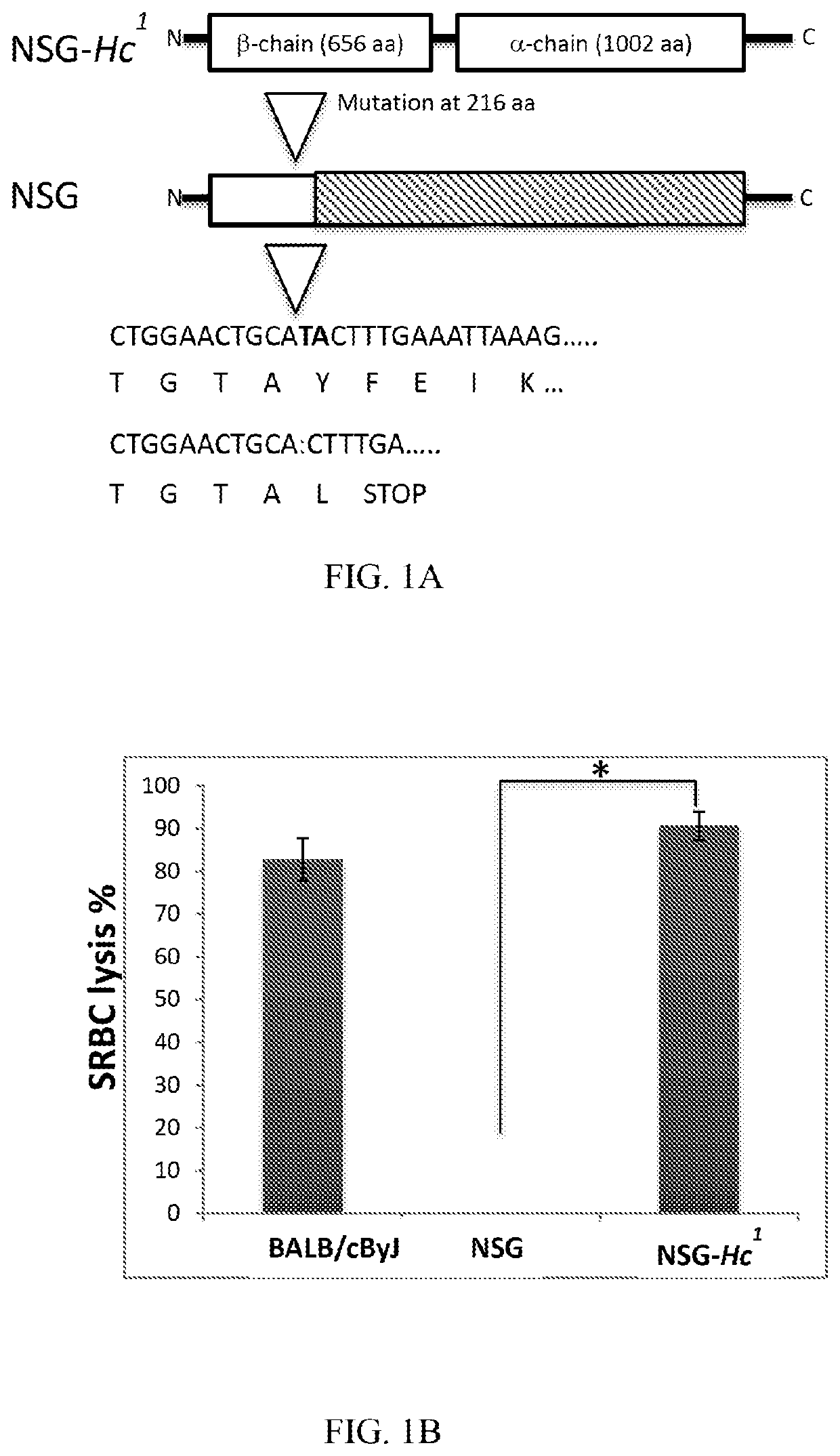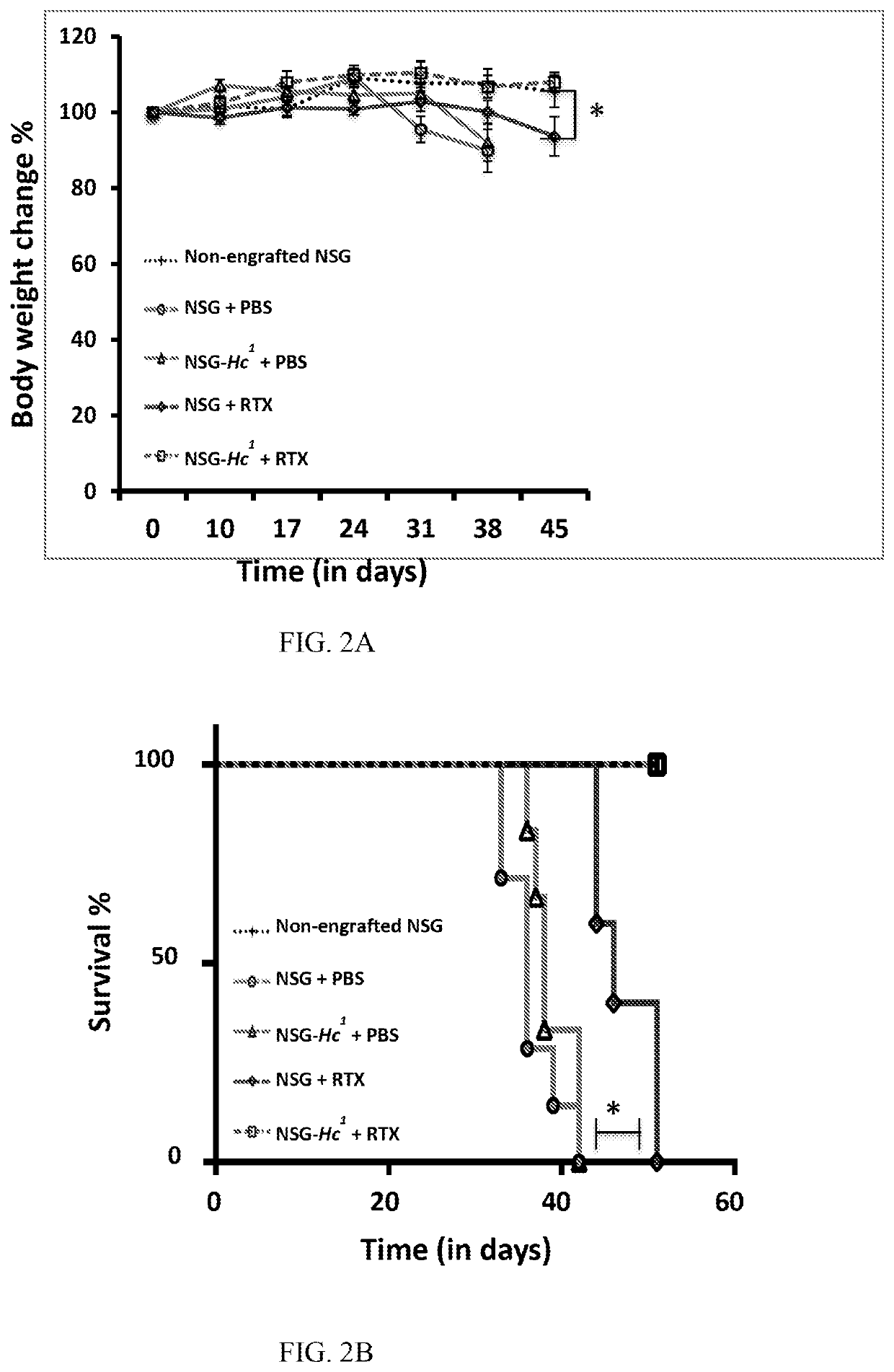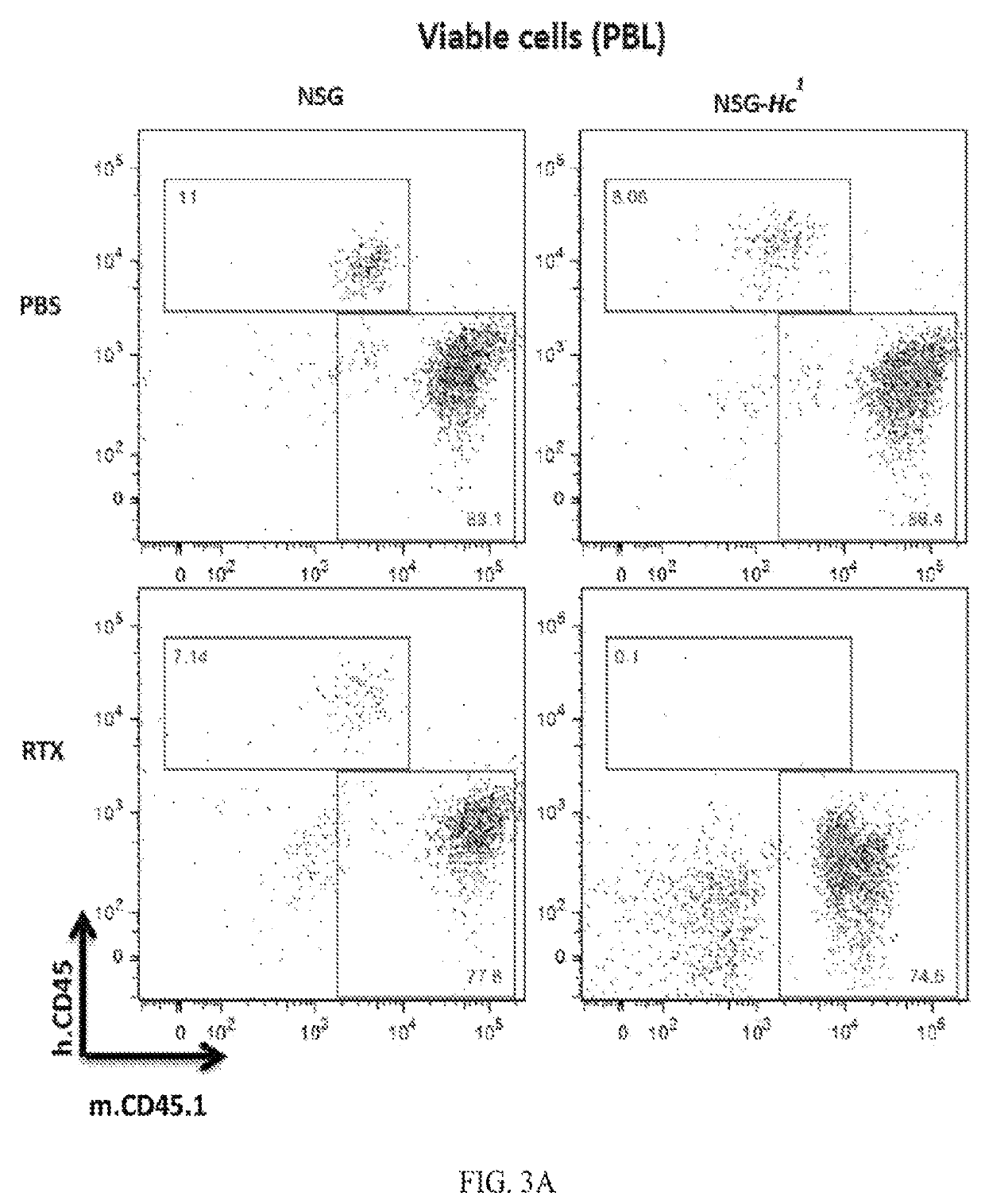Genetically modified non-human animals and methods relating to complement dependent cytotoxicity
a technology of complement dependent cytotoxicity and non-human animals, which is applied in the field of genetically modified non-human animals and immunodeficient non-human animals, can solve the problem of preventing the evaluation of cdc activity in vivo in these mi
- Summary
- Abstract
- Description
- Claims
- Application Information
AI Technical Summary
Benefits of technology
Problems solved by technology
Method used
Image
Examples
example 1
[0280]Generation of Sufficient Complement NSG.
[0281]Absence of hemolytic complement lytic activity in NOD mice results from a 2 base pair deletion in the Hc gene encoding the C5 complement component. The termination codon UGA is present 4 bp downstream from the deletion that causes the lack of C5 protein expression. The defective Hc0 allele expressed by NOD / Lt mice (Hc locus Chr 2) was replaced by a wild-type Hc1 allele from CBA by outcrossing a CBA / Ls female to a NOD / Lt male mice, followed by ten backcrosses to NOD / Lt mice and fixation of sex chromosomes from NOD / Lt mice. A homozygous congenic mouse strain, designated NOD-Hc1, was obtained carrying Chr 2 alleles derived from CBA / Ls including Hc1 allele, i.e. NOD.CBALs-Hc1 / Lt (stock #004306), from The Jackson Laboratory bio-repository. Male NOD.CBALs-Hc1 / Lt mice were mated with female NSG mice from the Jackson Laboratory biorepository (stock #005557).
[0282]cDNA from F1 offspring mice were subjected to targeted Sanger sequencing capt...
example 2
[0287]In Vitro Characterization of Complement Dependent Cytotoxicity in NSG-Hc1 Mice.
[0288]Sera from 9-10 month old male BALB / cBy, NSG and NSG-Hc1 mice were collected and the level of complement activity in mouse sera was determined by examining the capacity of 1:5 diluted mouse sera to lyse antibody coated sheep RBCs, i.e. sensitized cells (EA cells). Sheep RBCs (Cat #10H72) and rabbit antiserum to sheep RBCs (Cat #10K945), were purchased form Grainger. Sheep RBCs (SRBC) were washed and maintained in HBSS medium. Whole mouse blood was collected directly into Becton Dickinson microtainer tubes with serum separator and allowed to clot by leaving undisturbed for 15 minutes at room temperature. The clots were removed by centrifugation and the sera were removed using a sterile pipette. Complement activity in mouse sera was determined by measuring the lysis of antibody-coated SRBC in various serum dilutions. Briefly, SRBC cells incubated with anti-SRBC antibody (EA cells) were prepared b...
example 3
[0303]Complement Assay
[0304]Reagents[0305]Sheep RBCs from Grainger, cat #10H72, 20 mLs[0306]Rabbit anti sheep RBC from Grainger, Cat #10K945, 2 mL, Reconstitute with 2 mLs H2O, aliquot and freeze at −80.[0307]Guinea Pig Complement from Grainger, Cat #10H654, 5 mLs. Reconstitute with 5 mLs distilled H2O, aliquot and freeze at −80.[0308]HBSS from Gibco, #14025
[0309]Overview—each well will have a total of 200 μLs: 175 μLs of lysis control or diluted serum, and 25 μLs of antibody coated sheep RBCs.
[0310]Complement Assay Protocol:
[0311]Wash Sheep RBCs (2.5 mL / plate, 25 μLs / well) in HBSS.
[0312]Prepare EA (antibody sensitized sheep red blood cells)[0313]Add 1*10{circumflex over ( )}9 RBC (˜1 mL) to eppendorf tube and mix with anti-SRBC antibody @ 1:10 dilution (scale up for the number of wells; 25 μL / well)[0314]Incubate at 37 C for 30 min, then spin down 5 min @350×g and resuspend in the original volume of HBSS
[0315]Prepare Samples[0316]Add 120 μL serum to 405 μL HBSS. After adding the SRB...
PUM
| Property | Measurement | Unit |
|---|---|---|
| diameter | aaaaa | aaaaa |
| volume | aaaaa | aaaaa |
| OD | aaaaa | aaaaa |
Abstract
Description
Claims
Application Information
 Login to View More
Login to View More - R&D
- Intellectual Property
- Life Sciences
- Materials
- Tech Scout
- Unparalleled Data Quality
- Higher Quality Content
- 60% Fewer Hallucinations
Browse by: Latest US Patents, China's latest patents, Technical Efficacy Thesaurus, Application Domain, Technology Topic, Popular Technical Reports.
© 2025 PatSnap. All rights reserved.Legal|Privacy policy|Modern Slavery Act Transparency Statement|Sitemap|About US| Contact US: help@patsnap.com



